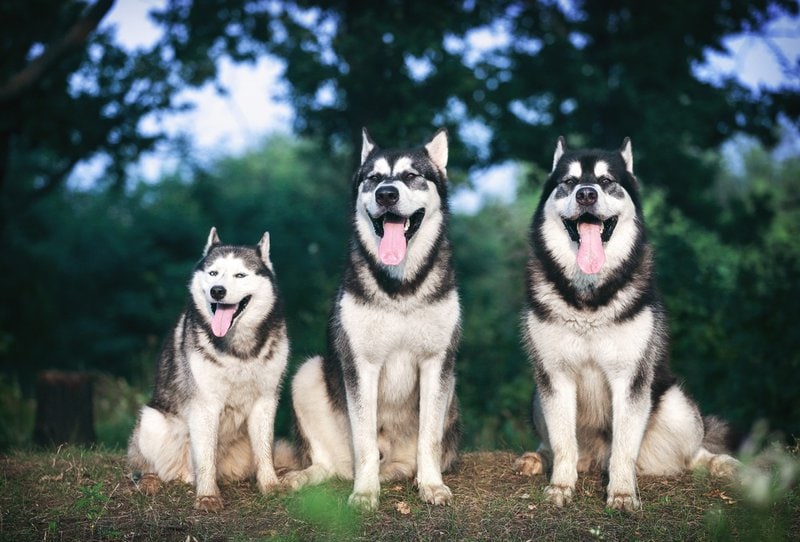Fluffy, wolf-like, and strong – these are just some of the common features that the Alaskan Malamute and the Siberian Husky share., but you may not be aware of the many differences these two breeds have – and that’s what we’ll cover today!
Although both breeds have thick coats, Huskies require less frequent grooming than the Malamute. These fluffy pooches are both affectionate, but Huskies are more clingy to their humans, unlike the independent Mallies. And with Mally’s stubborn streak, training them takes more time and patience than what you can expect from a Husky.
But wait… There’s more! Check out our Alaskan Malamute VS Siberian Husky comparison to discover plenty more differences that make each breed stand out.
22. Coat Length
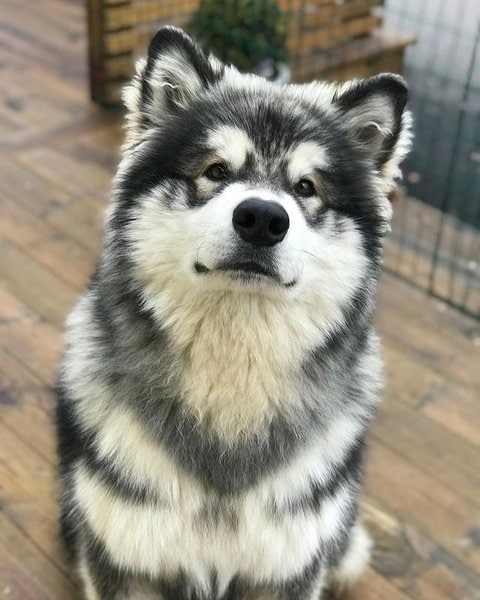
At first glance, both breeds look like pups of the same kind. They both have thick and fluffy coats, but there is a subtle difference between the two once you take a closer look at their fur.
The Siberian Husky and Alaskan Malamute have double coats, which enable them to thrive in frigid climates. However, Malamutes have longer and thicker hair than the Siberian Husky. Moreover, the coat texture is coarser than that of a Husky but fluffier nonetheless.
21. History
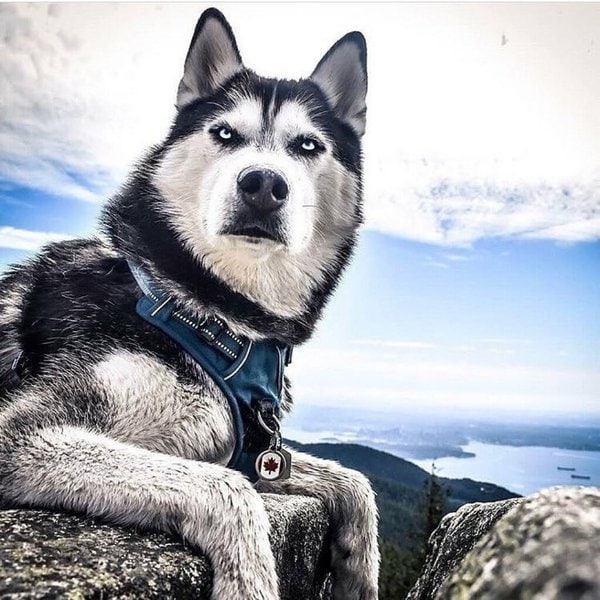
These pooches are both bred as working dogs in the Arctic. However, they are from different locations despite the same frigid region. Alaskan Malamutes descended from the wolf dogs and were a companion of humans who traveled from the Bering Strait all the way to North America.
As for the Siberian Husky, this breed was made for speed and hailed from Northern Asia. These dogs can cover more distances because of their high energy level and strength.
20. Tail
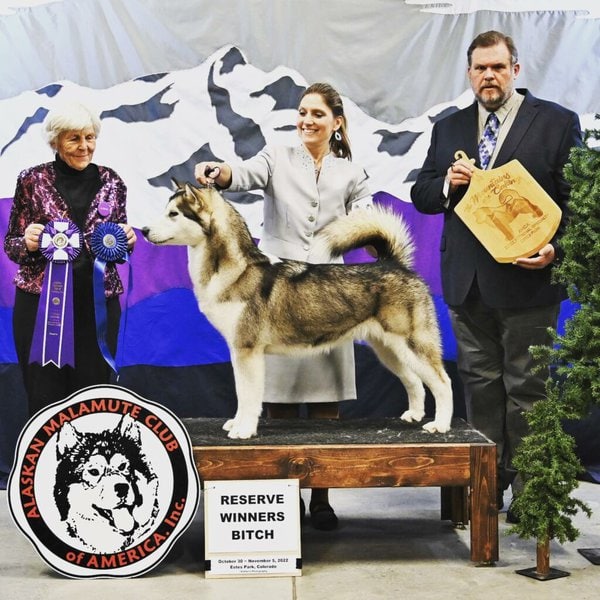
If you look past their fluffy coats and onto their tail, you will notice another striking difference between these two breeds. This is, in fact, one quick way to tell these dogs apart, which some people miss.
Mallies have bushy tails, which they carry right over their back. Their tail resembles a feathered plume that waves in the air as they walk. Huskies, on the other hand, have brush-like tails that normally point straight down.
19. Size
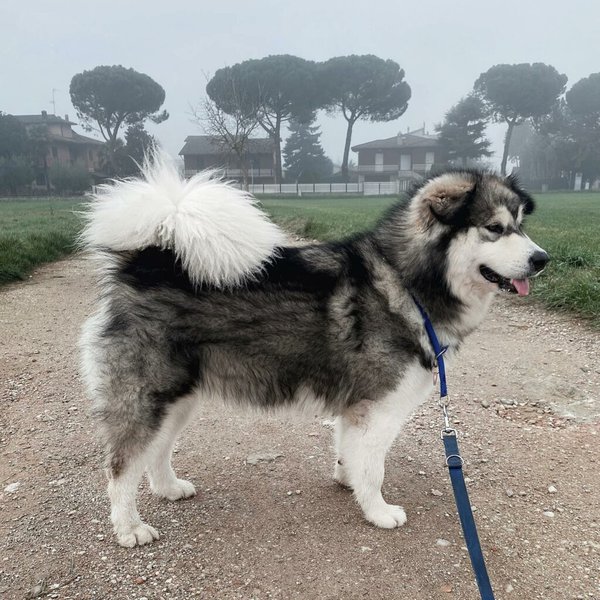
There is no doubt that these dog breeds are large and heavy. The Siberian Husky has an average height of 20 to 24 inches and weighs about 40 to 50 lbs. Male Huskies are just about the same height as females, but they are heavier.
Malamutes are about the same height and can grow up to 25 inches tall, but these dogs are burlier creatures and can weigh as much as 85 lbs for males and 75 lbs for females.
18. Coat Colors
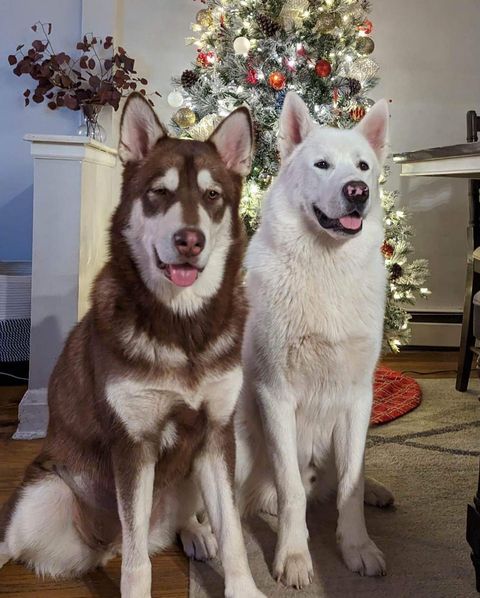
Both dog breeds have the same coat colors, which can range from gray, rust, black, white, or a combination of these hues. However, there are some subtle differences in the intensity of their coat colors.
Younger Huskies have highly contrasting and bolder coat colors. However, the intensity tends to fade over time as they age. Malamutes, on the other hand, whether puppies or adults have subtle colors.
17. Eye Color
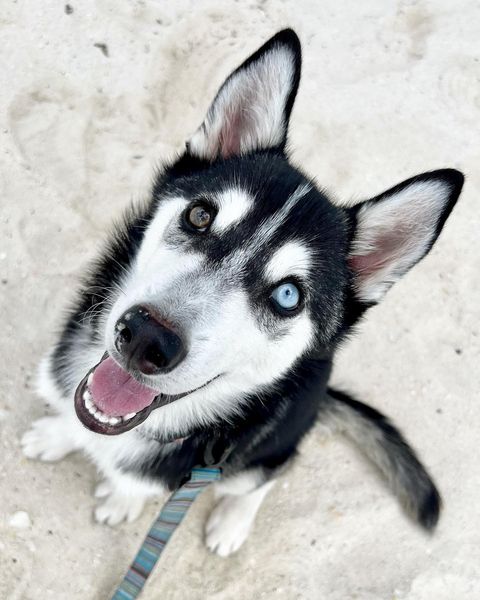
The most common eye color for both breeds is brown., but it is uniquely a Husky trait to have heterochromia. This means that one eye is brown while the other one is blue. This is something that you cannot find in a Malamute.
Generally, Mallies have brown eyes, which may be a lighter or a darker shade of this color. It is rare to find Malamutes with blue eyes and when you do, it is considered a fault for this breed.
16. Good With Children
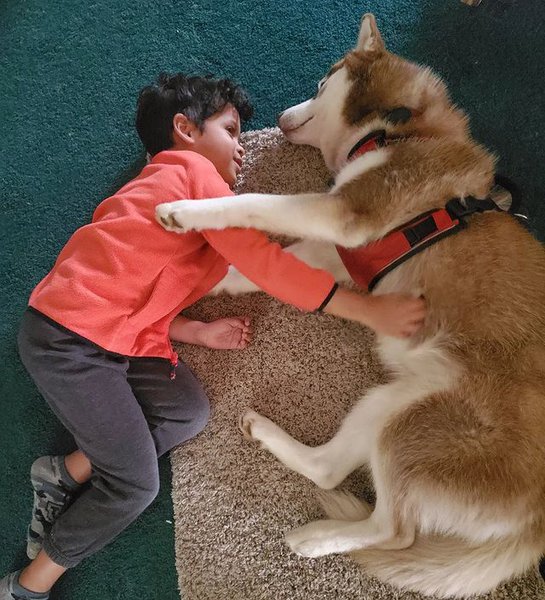
These fluffy pooches are affectionate and loving creatures. Siberian Huskies are known to be social butterflies and enjoy being with their families and other dogs. They can also be patient with young children and other household pets.
Although Mallies are loving fellows, they are not too crazy about young, playful kids. They would be better off in a household with older children and adults. Moreover, they do not get along easily with other canines, so it is not ideal for keeping a Malamute if you have other pets at home.
15. Markings
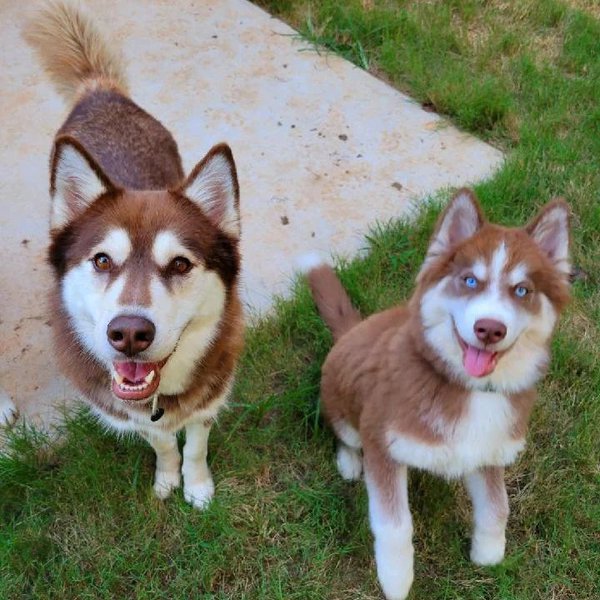
Both the Malamute and Husky have white faces and underbellies, but what is unique about a Malamute trait is the white cap. The top of their head has a round white portion that makes them look like they are wearing a cap.
As for the Husky, this breed does not have this white cap appearance. However, these dogs have white faces and coloring around their noses and eyes. Hence, it lends the appearance of having a white face mask.
14. Noise Level
Having a dog is fun, but the last thing you want is to have the neighbors complaining when you have a pooch that barks a lot. So, it is good to consider the noise level of a canine, especially if you live in a small apartment.
Huskies are chatty, vocal dogs that love to make a wide range of odd noises, such as woofs, howls, barks, and more. As for Mallies, they are not quite loud and will only let out soft howls occasionally.
13. Ears
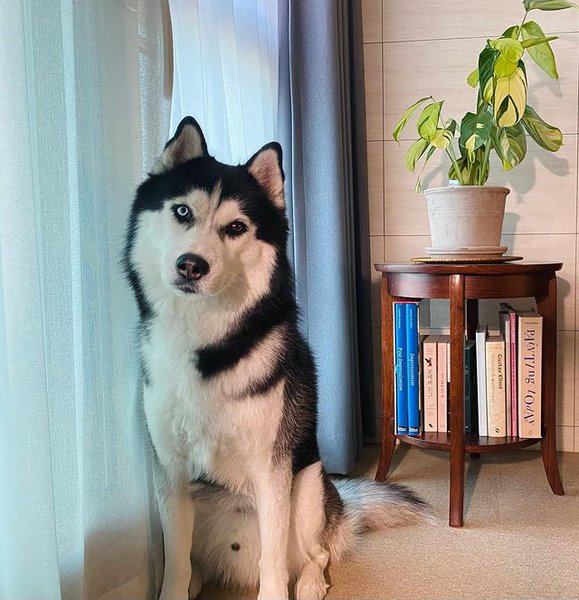
If you want to quickly tell the difference between an Alaskan Malamute and a Siberian Husky, you can take a look at their ears. Siberian Huskies have ears that are always upright and erect. It almost looks like a rabbit’s ears pointing up.
But Malamutes have a unique-looking set of ears, which nearly resemble a human’s ear – they stick out and are close to the side of the head.
12. Temperament
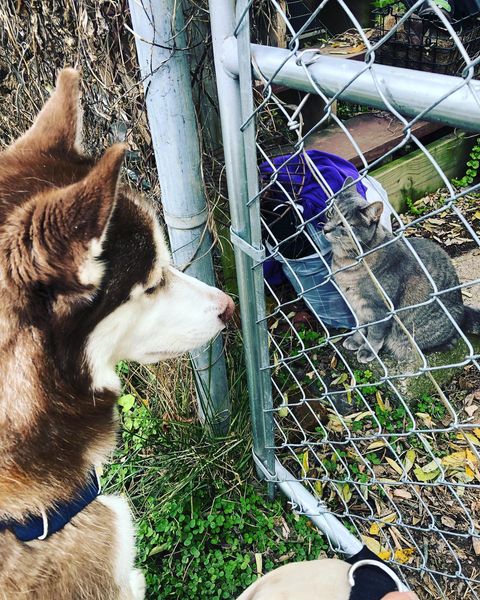
The dog’s temperament is an important factor to consider when deciding on the breed of canine to get as a pet. If you prefer an outgoing and energetic breed, then that is the Siberian Husky. These pups love to be with their families and dislike being alone.
Malamutes are the exact opposite because they are independent creatures that prefer some alone time once in a while., but they can be quite stubborn and not much of an energy bunny as the Husky. They can be content just being at home.
11. Lifespan
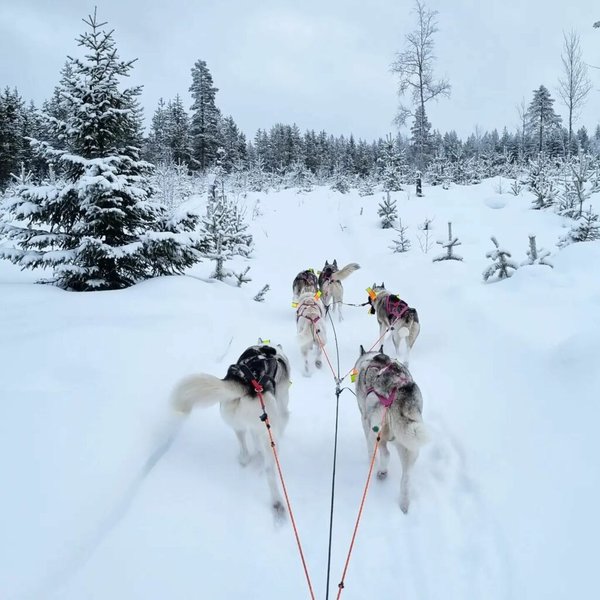
A dog’s size has an impact on its lifespan. The bigger the dog, the shorter the lifespan. This is why Huskies live longer and have an average lifespan of 14 years. They are also not prone to health concerns, unlike the Malamutes.
Alaskan Malamutes can live as long as ten years, while others can reach a ripe old age of 12 years. They are larger dogs that are predisposed to a few ailments, which impact their longevity.
10. Aggression
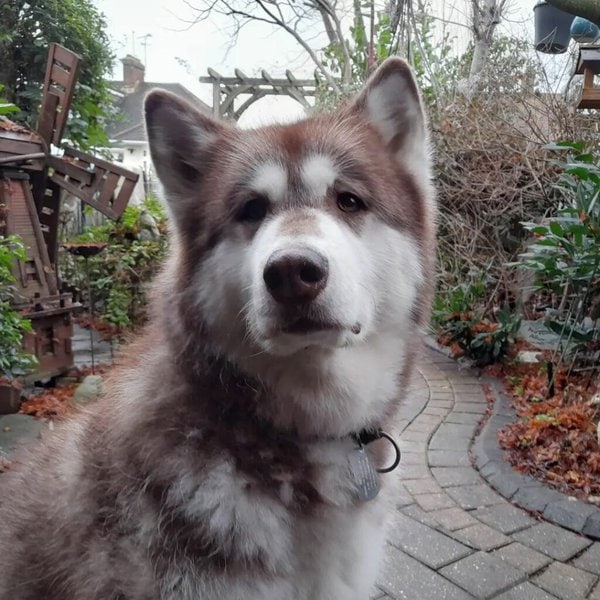
By nature, Huskies are not territorial dogs. This is why they are least likely to be aggressive, even toward strangers. However, they still need socialization and training to develop their best behavior.
But Mallies are pretty protective and can be territorial. This explains their tendency to become aggressive, which is why they are not ideal for a household with your children. If you have other dogs, you may want to consider a Husky instead of a Mally because the latter is least likely to get along with other pooches in the house.
9. Impulse To Roam
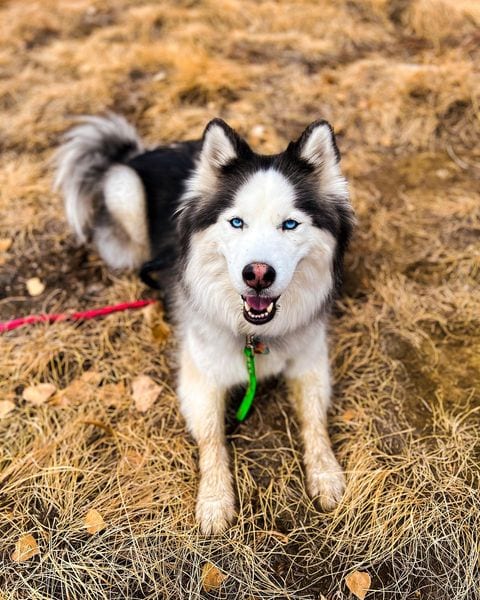
Because of their nature to be swift and always on the go, Huskies are avid runners. They can easily escape their homes because of this strong wanderlust behavior.
As for the Alaskan Malamute, this breed has the wanderlust potential but can also be happy being home. These dogs love to dig, and they are able to create a way to get outside through digging. So, be sure to build a sturdy fence that these massive dogs cannot easily take down.
8. Physical Strength
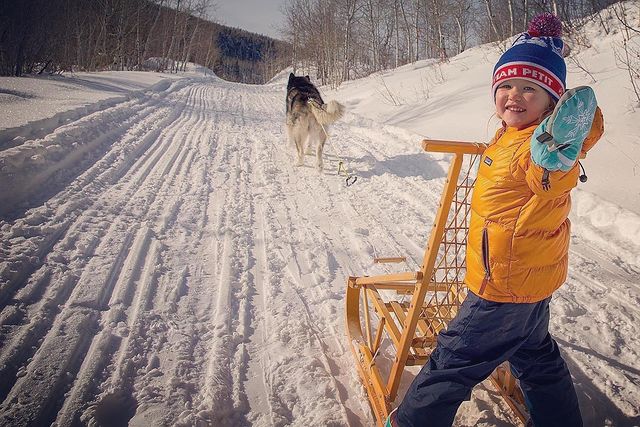
Siberian Huskies may be large dogs, but their bodies are made for speed and running long distances. This is why they can travel over a longer distance as they carry light loads. They also excel in sled dog racing, which is another one of their strengths.
Alaskan Malamutes are also strong, but these dogs were bred for a different reason. They are capable of hauling heavy loads but can only travel a shorter distance. These pups are also not as fast because of the massive weight they can carry.
7. Popularity
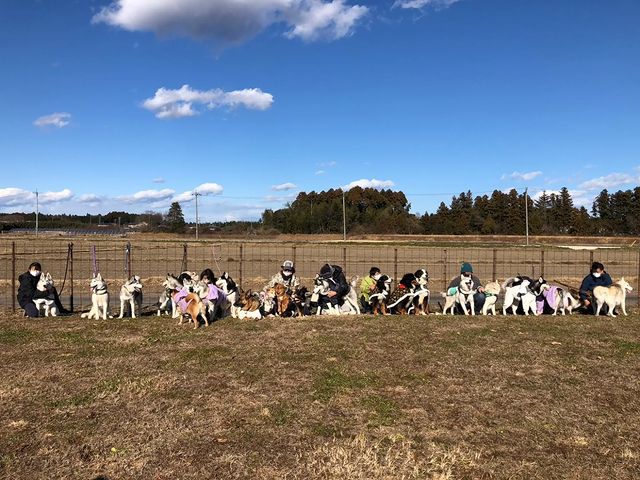
Huskies are quite popular breeds that rank number 14 on the most popular dogs list by the American Kennel Club. This is why it is easy to find these dogs and have relatively regular litters.
But Malamutes are not as popular. In fact, they are considered to be rare, and they ranked 68th on the AKC’s popularity list. Hence, you cannot easily find a breeder for Malamutes, and many owners even have to import puppies just to get one.
6. Price
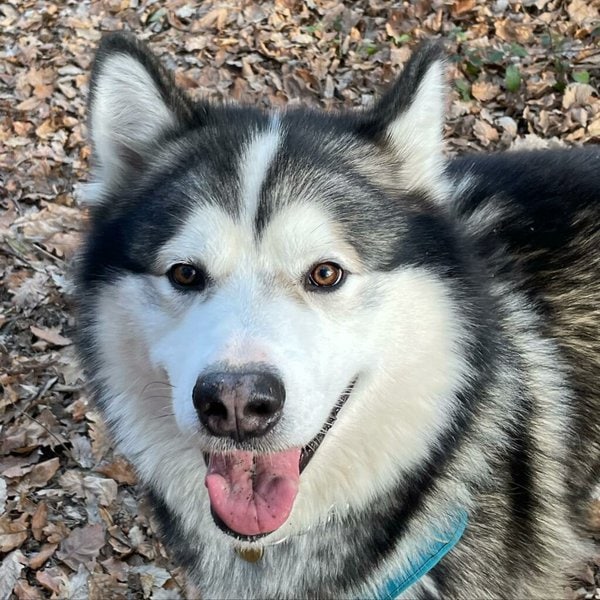
Along with the popularity of a dog comes the cheaper cost of buying one. For instance, the Siberian Husky, being that it is quite popular, costs $600 on average or up to $1,300, depending on the breeder and the puppy’s history.
You can expect to pay more when you buy a Malamute puppy, which can set you back by about $1,200 or upwards of $1,700, but aside from the upfront cost, the upkeep for a Mally is more expensive because of frequent groomer visits.
5. Health
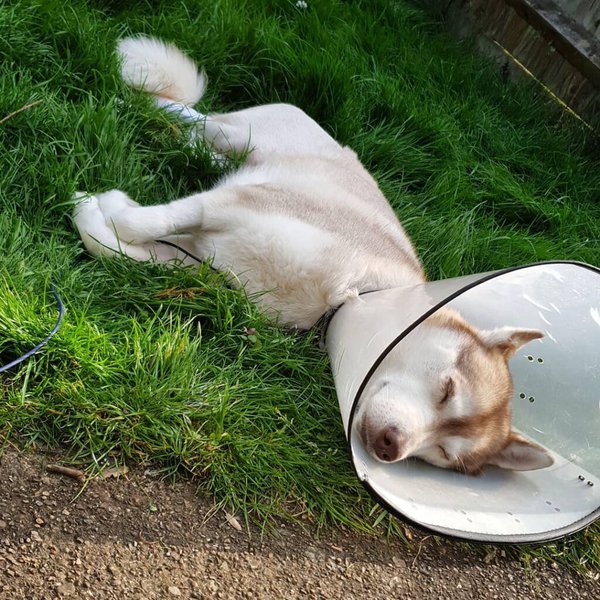
Huskies typically have fewer health concerns than Malamutes. The most common issue among Huskies is cataracts, which is why it is important to catch this eye problem at its early stage to get it treated promptly.
Mallies, on the other hand, are at risk of a number of physical ailments because of their burlier build, such as hip dysplasia, polyneuropathy, and elbow dysplasia. They are also prone to genetic disorders, such as von Willebrand’s disease, day blindness, and hypothyroidism.
4. Exercise Needs
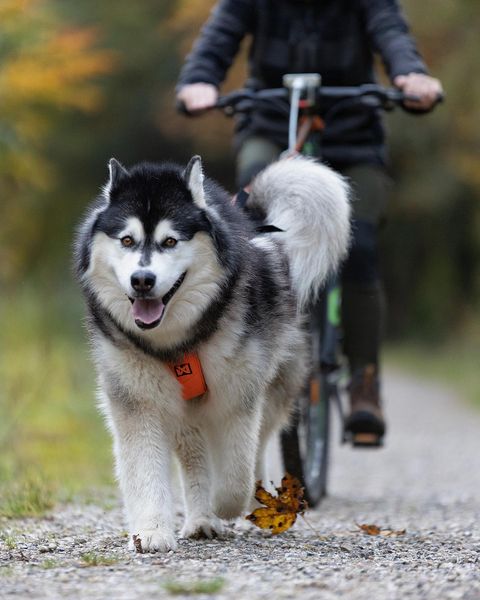
Huskies are basically racers, while Malamutes are freighters. This explains why Huskies are excellent runners and will do all they can to get their exercise time in. A couple of hours a day for exercise should suffice to keep them fit and healthy.
But Malamutes prefer a different type of activity for their exercise, such as swimming and walking. They do need to stay hydrated, considering their thick fur and heavy build.
3. House Training
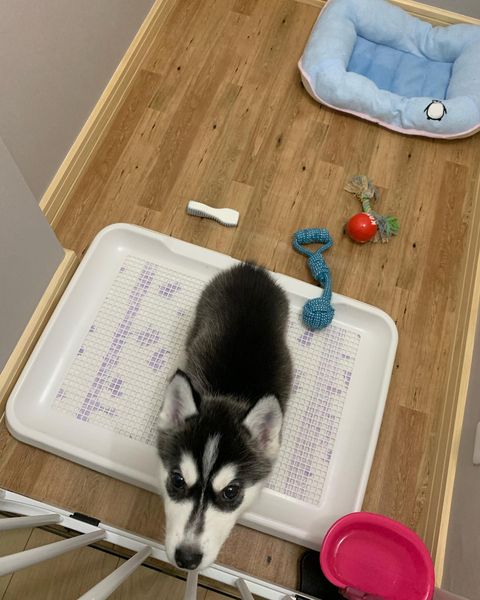
Huskies have an average intelligence level, which makes them easy to house-train. They are also eager to please, so it should not take too long before they can master a skill you teach them.
On the other hand, Alaskan Malamutes are stubborn dogs. They have a high intelligence level, but it is their stubbornness that makes them challenging to house-train. More patience is required to help them learn new skills.
2. Independence
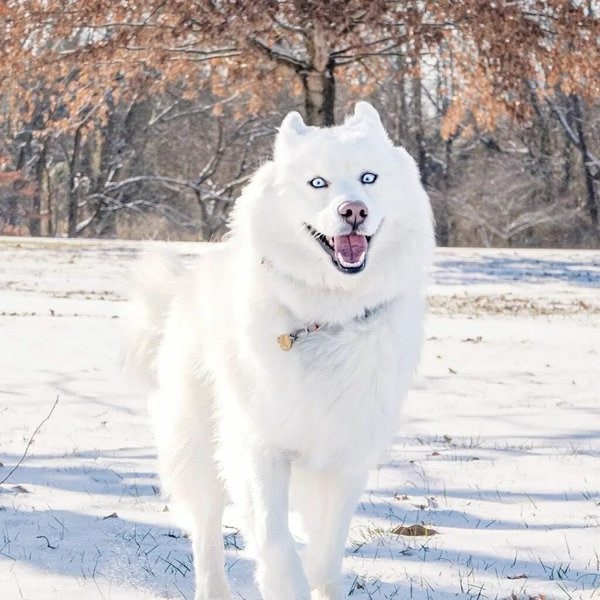
Malamutes are independent pups, so they are great for people who have to work at the office for hours each day. They love their occasional alone time and will prefer to be the only pet in the household.
Huskies, however, are clingy and social dogs that love to be with people. They are family pets that love to be part of the group and do not mind having other pets at home. These dogs can suffer from separation anxiety when left alone for long hours.
1. Grooming Requirements
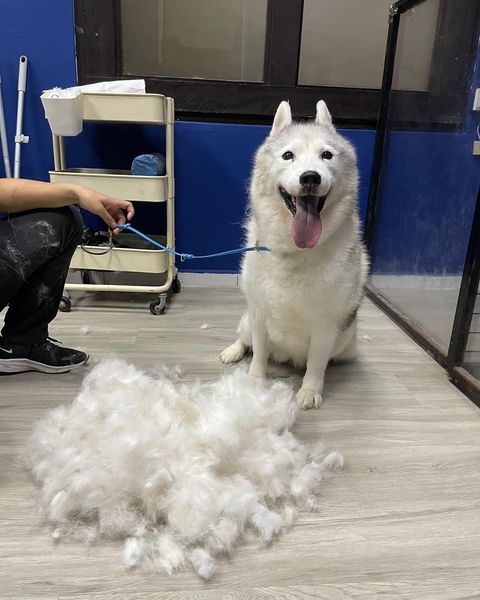
While both dog breeds are fluffy and have a tendency for mats, the Siberian Husky needs fewer brushings. Weekly grooming should suffice, and they also have self-cleaning fur that naturally repels dirt. So, that adds to the ease of grooming these pups.
But Alaskan Malamute needs more brushing than just once a week. Its voluminous and long fur tends to tangle easily, so you need to comb through the knots gently each day. Its fluffy coat also traps more dirt, so frequent bathing is ideal.
Related Questions
Is A Malamute A Type Of Husky? No, a Malamute is a separate dog breed that is recognized by the American Kennel Club. It is a part of a working dog group, just like the Siberian Husky.
Is A Malamute Dog Part Wolf? Malamutes are primitive breeds that have more genetic variants in their DNA, similar to wolves. Their appearance closely resembles their wolf ancestors as well.
How Much DNA Does A Husky Share With A Wolf? There are some experts who have claimed that a Siberian Husky has approximately 12.5% wolf in its DNA, while others say it is closer to 30%. Huskies also have some parts in their genome, the same DNA that traces back to the ancient Siberian wolf.

